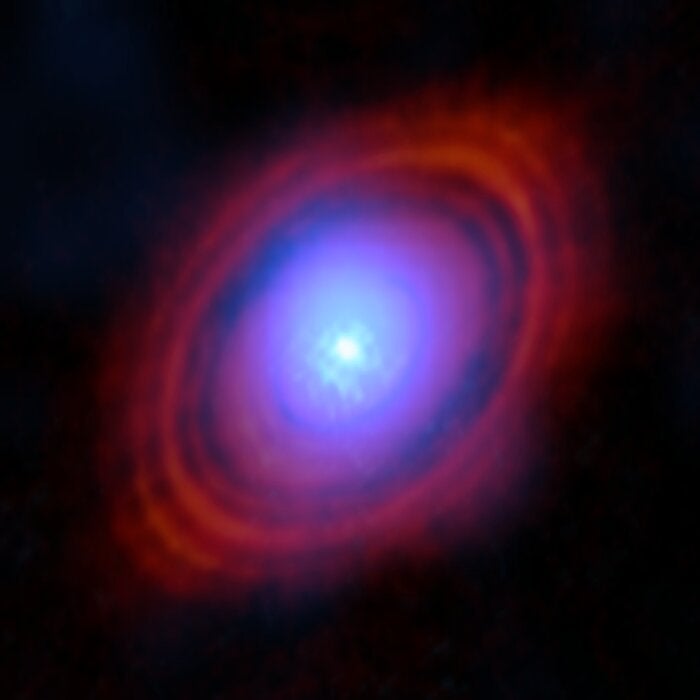
Astronomers have found water vapor around a young star within the constellation Taurus, 450 light-years away from Earth. “I had never imagined that we could capture an image of oceans of water vapor in the same region where a planet is likely forming,” said astrophysicist at the University of Milan and study leader Stefano Facchini in a press release.
The new observations came from Chile’s Atacama Large Millimeter Array (ALMA) radio telescope. ALMA detected and captured a detailed image of the disc orbiting a sun-like star, called HL Tauri, holding oceans of water vapor at levels three times as much as all of Earth’s oceans just within its inner-most region.
The find brings researchers closer to examining how water vapor is mapped across cool, planet-forming disks and how it might be a crucial step in forming planets. The new study was published in Nature Astronomy.
Where is the water?
Within HL Tauri’s disk, is a particular ring-like gap where scientists suspect a planet is forming. Planets form when they absorb and add material and dust to their masses as they orbit around their host stars. Each orbit cycle, they bump into and accumulate more debris, leaving behind a clearer path than the one before. “Our recent images reveal a substantial quantity of water vapor at a range of distances from the star that includes a gap where a planet could potentially be forming at the present time,” said Facchini. According to the study, the star’s interferometric data shows three water emission lines inside the star’s inner disk, more specifically that the water vapor is bounded to that prominent gap.
Interferometry is a method used to measure the inference of waves traveling along the same medium — meaning that when two waves meet, they change the shape of the medium. Measurements from interferometry can also reveal the characteristics of each wave and their interactions.
Water is most likely “being released from icy dust particles,” explained Elizabeth Humphreys, an astronomer at the European Southern Observatory (ESO) who was involved in the study, in a statement. This planet-forming area is suggested to be at a cold enough temperature to make the water freeze onto dust particles — ultimately, making them more prone to aggregate to other floating debris. This creates the perfect conditions to form planetary cores that will eventually form a planet.
“So, water certainly appears to have an extremely important role in general in protoplanetary disks,” says Humphreys to Astronomy.
The James Webb Space Telescope (JWST) observed water vapor in other protoplanetary disks before. It’s been suspected that icy pebbles travel inwards from the colder, outer regions of a protoplanetary disk through friction. This enriches the inner regions with water and solids which is then fed to forming planets. Because the outer region is colder than the inner, this causes the icy water to transition into water vapor.
Baby planets
ALMA is no stranger to studying planetary formation. In 2023, a study published in The Astrophysical Journal analyzed 19 protostars with protoplanetary disks to find hints behind the planet formation process. The Early Planet Formation in Embedded Disks (eDisk) survey was conducted after scientists found that there may be a higher chance of planet formation in more-evolved protoplanetary disks. Now with the eDisk survey, astronomers can observe planet formation in younger protostellar systems and how the protostars evolve as they get older.

The team focused on systems that are only between 10,000 to 100,000 years old. After piecing together the new findings and past findings, the team believes “that the actual formation of the planetary system progresses rapidly in the 100,000 to 1 million years after star formation starts,” said John Tobin at National Radio Astronomical Observatory.
When protoplanetary disks age, they appear less ‘dusty’ and thinner due to the dust hovering around the midplane settling in, and their concentric rings become more distinct. “Our results show how the presence of water may influence the development of a planetary system, just like it did some 4.5 billion years ago in our own Solar System,” Facchini said in a statement.









